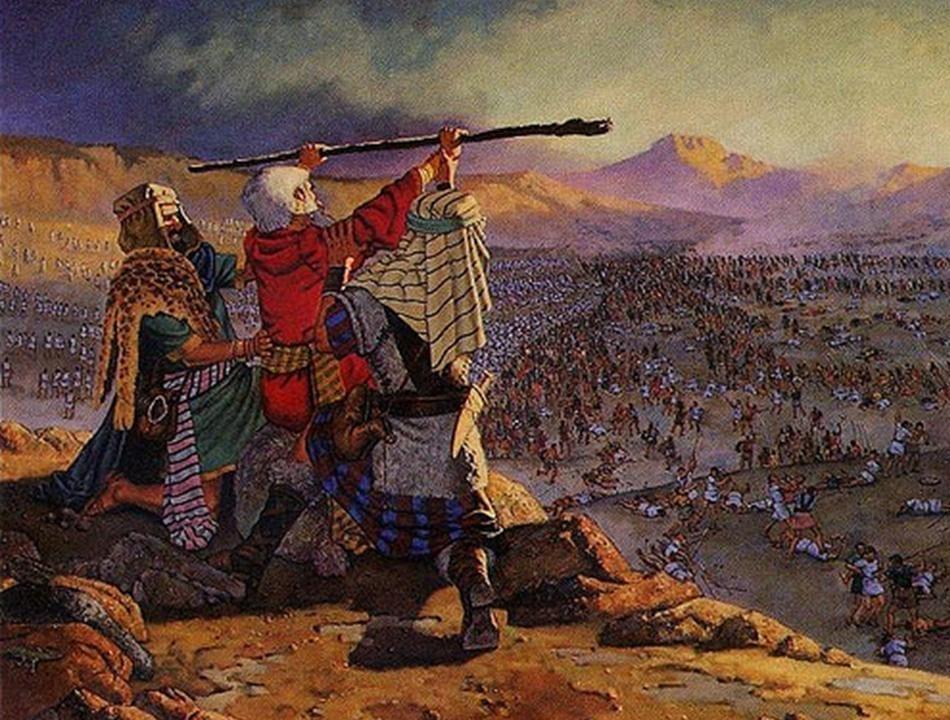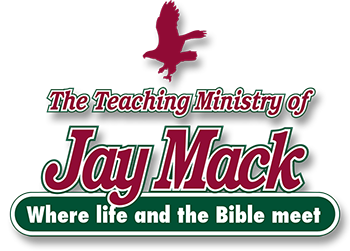The First Stage: Exodus to Rephidim
33: 1-14
The first stage: Exodus to Rephidim DIG: What impression does this travel log give you of the twists and turns in their journey? How might this help the Wilderness Generation who had not actually experienced the early parts of the journey? How might it affect their belief in the reality of God’s power? Why is the LORD so concerned that the Israelites drive out all of the Canaanites?
REFLECT: What parallels do you see in the Exodus and Wilderness experiences of the Israelites as compared with the pilgrimage of many who come to faith in Messiah today? What would you add to this list from your own journey with ADONAI? When has He “parted the waters” for you? When has He helped you find “water from a rock?” When has He led you from the desert to the Promised Land?
Parashah 43: Masa‘ei (Stages) 33:1–36:13
[In regular years read with Parashah 42, in leap years read separately]
The Key People are Moshe, Aaron, Reuben, Manasseh, Eleazar, Joshua, one leader from each tribe, Gileadite heads, and the daughters of Zelophehad.
The Scenes review Isra’el’s travel log (Numbers 33:3-49), while on the plains of Mo’ab (Numbers 26:3, 33:50, and Deuteronomy 34:1 and 8). Other scenes describe borders in the Promised Land, Levitical towns, cities of refuges and land for the daughters of Zelophehad.
The Main Events include the list of encampments from the Exodus to the plains of M’’ab, instructions to drive out the Canaanites, destroy their high places, and divide the Land; list of leaders to divide the inheritance; cities for Levites; cities of refuges; mitzvot about murder; each tribe to pass down their own inheritance, and the daughters of Zelophehad marrying inside their own tribe to keep their inheritance.743
Once the Tabernacle was completed while the Israelites camped at Mount Sinai (Exodus 25-30), it was taken apart and carried every time the Israelites traveled to a new encampment. There were 40 such journeys (to see link click Gc – Isra’el’s Travel Log).
These were the [three] stages and 40 encampments between the Exodus and the staging area to the Promised Land on the plains of Mo’ab. As the people of Isra’el left the land of Egypt, they divided into groups under the leadership of Moshe and Aaron. Moshe recorded each of the stages of their journey by commandment of ADONAI; here are the starting-points of each stage (Numbers 33:1-2).
It is quite reasonable that Moshe would record the beginning of the journey, at the moment of the Exodus. This he does with a touch of flair. Instead of merely stating that they began their journey from Ramses in the first month. On the fifteenth day of the first month, the morning after the Pesach, he adds, “the people of Isra’el left proudly, confidently, in view of all the Egyptians; while the Egyptians were burying those among them who Ha’Shem had killed, all their firstborn; ADONAI had also executed judgment on their gods (Numbers 33:3-4). How could Isra’el have done such a thing in front of all the Egyptians? Simply because YHVH was with them and He was the One who was really doing the moving. Thus, for Moses, the Exodus event brought back fond and exciting memories of what Ha’Shem had done for His people.744
1. The Israelites left Ramses and camped at Sukkoth (Exodus 12:37, 13:20; and Numbers 33:5). The name of the first location is Rameses. This, of course, is where it all started. This was one of the places where Isra’el was enslaved, building for Pharaoh. This would also have been the place where the plague of slaying of the firstborn occurred. In addition, it was at Rameses that the first Pesach was celebrated (see the commentary on Exodus Bv – The Egyptian Passover). It was there that Isra’el came to know the misery of slavery and the feeling of desperation to be rescued. It was also there that the Israelites first saw the miracles that their God, whom they thought was apathetic to their cause, could do on their behalf. Finally, at Rameses, they received their first portion of Torah – the teaching about keeping the Passover. Thus, the first part of Moshe’s entry was the place where bnei-Yisrael had their first lessons on what it means to be a redeemed people and a holy community. This was their first preparation for them to begin to understand about the redeeming and saving work of the Messiah. The Israelites journeyed from Rameses to Sukkoth. There were about six hundred thousand men on foot, beside the women and children (Exodus 12:37).
2. With the wonder of the Passover freshly engraved on their minds, the Israelites left Sukkoth and camped at Etham, on the edge of the desert (Exodus 13:20 and Numbers 33:6). Most scholars believe that these places are located between Timah and the Bitter Lakes, southeast from where they began and right around where the present-day Suez Canal is. We do not know how long they stayed at these places, but it could not have been for more than a few days. However, the question on everyone’s mind was surely, “What kind of God do we have? He judges the wicked, He rescues His own, He does miracles, and He wants to be remembered for who He is and the great things He has done.” The Torah also informs us that sometime, beginning either at Sukkoth or Etham, the Ruach Ha’Kodesh began to show His sovereign care for His freshly liberated children. ADONAI went ahead of them in a pillar of cloud during the daytime to lead them on their way, and at night in a pillar of fire to give them light; thus they could travel both by day and by night. Neither the pillar of cloud by day nor the pillar of fire at night went away from in front of the people (Exodus 13:21-22).
3. They left Etham, turned back to Pi Hahiroth, to the east of Ba’al Zephon, and camped near Migdol (Exodus 14:2 and Numbers 33:7). It was unusual for Isra’el to have passed through this rather obscure place. By all rights, most would have thought that they would have continued a northeast direction along the Via Maris, the ancient trade route which connected Egypt and Africa with Damascus and the East by following the Mediterranean coast as it went through the Promised Land. But the LORD had other things up His sleeve! We learn from Exodus 14:3-4 that ADONAI was tricking Pharaoh into believing the Israelites were wandering around the land in confusion, hemmed in by the desert. When Pharaoh was thinking this, the LORD said: I will harden Pharaoh’s heart, and he will pursue them. But I will gain glory for Myself through Pharaoh and all his army, and the Egyptians will know that I am the Lord (see Exodus Ch – The LORD Will Fight For You, You Need Only To Be Still). Hence, it was at Pi Hahiroth that God skillfully orchestrated the miracle of the dividing the Sea of Reeds, permitting Isra’el to cross on dry land and yet destroying Pharaoh’s army which tried to pursue them (see Exodus Ci – The Waters Were Divided and the Israelites Went Through the Sea on Dry Land). When Isra’el thought of this place, they, therefore, thought “Salvation! Miracle! Judgment for Egypt! Deliverance for us! This then became the paradigm for all future lessons of salvation and deliverance, including the salvation work of Yeshua Messiah.
4. They left Pi Hahiroth and passed through the sea into the desert, and when they had traveled for three days in the Desert of Etham, they camped at Marah (Exodus 15:23 and Numbers 33:8). After crossing the Sea of Reeds, they went further south to one of the places that they would have liked to forget. They came to the bitter waters of Marah. This is one of the places where we are not sure if it was originally called Marah, or if Isra’el named it Marah. The Hebrew word marah means bitter. It referred to the water that was found there (see the commentary on Exodus Cn – When They Came to Marah the Water was Bitter). But it also referred to the nation of the thirsty Israelites when they found out that the water was unfit to drink. They became embittered and so the people grumbled at Moses (Exodus 15:24). However, this is where the Almighty’s training began. The bitter waters were no accident for Him! For, there He tested them, and He taught them by saying: If you will listen intently to the voice of ADONAI your God, do what he considers right, pay attention to his mitzvot and observe his commandments, I will not afflict you with any of the diseases I brought on the Egyptians; because I am ADONAI your healer (Exodus 15:26). Hence, Marah became a place where the Israelites would remember that they began to grumble against the LORD who had just redeemed them. But they also would have remembered it as a place where He lovingly tested them and taught them some of their first lessons as a redeemed community.745
5. They left Marah and went to Elim. The people must have been ashamed after their grumbling at Marah to see how graciously God had provided for them at Elim where there were twelve springs with good water, seventy palm trees, and grass for their flocks and herds. They camped there near the water (Exodus 15:27, 16:1 and Numbers 33:9). The picture is of an ideal oasis, with a spring for every tribe and a palm tree for every elder. We do not know how long the people stayed there, but it was no wonder that they settled down and camped for a while. So after the bitterness of Marah, God brought His people to Elim. It was a place of abundant blessing and fruitfulness. The psalmist said: Weeping may remain for a night, but rejoicing comes in the morning (Psalm 30:5). Simon Peter may have been locked in an inner prison, but the angel was going to open the door. Paul and Silas may be beaten at midnight, but an earthquake would free them. God’s plan for us always leads to Marah . . . and then to Elim. Joseph, you remember, had that same experience. Moses did, Elijah did, and David did. Beyond every Marah there is an Elim. Beyond every cloud, there is the sun. Beyond every shadow, there is the light. Beyond every trial, there is a triumph. Beyond every rainstorm, there is a rainbow. This is the way God leads us.746
6. They left Elim and camped by the Sea of Reeds (Exodus 13:17 to 14:31 and Numbers 33:10). Nothing is told about this particular trip to the Sea of Reeds. Perhaps upon their return, if ever so brief, the LORD wanted them to think and contemplate on what He did there to release them from bondage (see Exodus Ce – Salvation at the Red Sea).
7. They left the Sea of Reeds and camped in the Wilderness of Tzin (Ex 16:1-36 and Num 33:11). After a brief stop at the Sea of Reeds, ADONAI led the children of Isra’el to the wilderness of Tzin. To English speakers, this sounds like the wilderness of “sin.” However, do not be confused because of the languages. The English word “sin” is just a transliteration of the Hebrew word which has nothing to do with sin! Having said all of that, however, we must report that it was in the Wilderness of Tzin, that Isra’el sinned greatly! For when they got hungry for some of the food they left behind in Egypt, the whole congregation of the sons of Isra’el grumbled against Moses and Aaron in the wilderness (Exodus 16:2). In response, the LORD supplied them with manna (see Exodus Cr – I Will Rain Down Manna from Heaven) and quail (see Exodus Cs – That Evening Quail Covered the Camp). The quail that Ha’Shem provided had apparently been a one-time event; consequently, the Isrealites ate manna for the next 38 years until they reached the Promised Land.747
8. They left the Wilderness of Sin and camped at Dophkah (Numbers 33:12). Not mentioned in Exodus, so this location is unknown. Rabbi Hertz reminds us that . . . it is exceedingly difficult to identify the exact route of march, more especially as the names were not names of cities, but of conspicuous landmarks. Which have changed with the centuries, and the designation of the temporary landmarks have been forgotten (Rabbi J. H. Hertz, Pentateuch and Haftarah, page 715).748
9. They left Dophkah and camped at Alush (Num 33:13). Not mentioned in Exodus, location unknown.

10. It is not often when we find a comment in this travel log itself about what happened at a particular location. However, in 33:14 we read: And they left Alush and camped at Rephidim, where there was no water for the people to drink. At this location, the people once again complained to Moshe. When Moses brought his problem to ADONAI, He said: I will stand in front of you there on the rock in Horeb. You are to strike the rock, and water will come out of it, so the people can drink. Moshe did this in the sight of the leaders of Isra’el. As a result, Moses named the place Massah (meaning testing) and M’rivah (meaning quarreling) because of the quarreling of the people of Isra’el and because they tested ADONAI by asking, “Is ADONAI with us or not?” However, the testing of ADONAI was not the only thing that happened at Rephidim. Each stage ends with a significant event. And here, at the end of the first stage, we read: Then ‘Amalek came and fought with Isra’el at Rephidim (Exodus 17:8). According to the account in Exodus, this attack was specifically singled out for an everlasting memory! When Isra’el defended herself against Amalek, Moses, Aaron, and Hur watched Joshua lead Isra’el victoriously into battle against them. But the victory depended on Moses holding up his staff (see the commentary on Exodus Cv – The Amalekites Attacked the Israelites at Rephidim). After the victory ADONAI said to Moses, “Write this in a book to be remembered, and recite it to Joshua: I will completely blot out any memory of ‘Amalek from under heaven.” Moshe built an altar, called it ADONAI-Nissi [ADONAI is my banner/miracle], and said, “Because their hand was against the throne of YHVH, ADONAI will fight ‘Amalek generation after generation” (Exodus 17:14-16).749
Dear Heavenly Father, praise You for Your great wisdom that sees all. When I am following You and everything seems impossible, You are the One who provides a path for me – even through what appears to be a “dead end”. The Israelites arrived at the Sea of Reeds and were hemmed in on three sides with the Egypt army hot on their tails and no place to flee to. Their situation looked impossible; but You parted the waters for Isra’el. What is impossible for man, is possible for You! God made a way!
Food and water are both necessary for life, especially when traveling through the wilderness. Isra’el grumbled when they needed water to drink after traveling for three days in the wilderness. It looked like an impossibility; but God brought them to Elim with twelve springs of water and seventy Palm trees. What is impossible for man – is possible for You! God made a way! Isra’el grumbled against Moses and Aaron because they were so hungry and wanted bread to eat. It looked like an impossibility, but You rained down bread from heaven, manna. What is impossible for man – is possible for You! God made a way! Again the people needed water to drink. They quarreled with Moses and grumbled. It looked impossible but You brought water out of the rock for the people to drink. What is impossible for man – is possible for You! God made a way! The army of Amalek came to Rephidim to fight the untrained nation of freed slaves. It looked impossible; but as long as Moses’ staff was held up, Isra’el prevailed. What is impossible for man – is possible for You! God made a way!!
Praise you that I don’t need to worry if a problem seems too big for me to handle. For You who can see the future as if it were the past. You solve situations that seem impossible to me. No matter where I am on my life’s journey, You are always there to help and guide me. For with God, nothing is impossible (Luke 1:37). I love you! In Messiah Yeshua’s holy Name and power of His resurrection. Amen



Leave A Comment